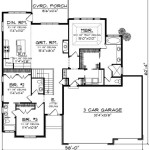Outdoor cat house plans are detailed instructions and designs that guide the construction of a shelter or enclosure for felines to use outdoors. These plans typically specify the materials, dimensions, and assembly steps necessary to create a safe, comfortable, and weather-resistant shelter for cats to rest, hide, and escape the elements.
For cat owners who want to provide their feline companions with a designated outdoor space, cat house plans can be a valuable resource. Whether it’s for shelter from sun, rain, wind, or other elements, an outdoor cat house can enhance the well-being of an outdoor cat by providing a safe and familiar retreat.
In this article, we’ll delve into the various aspects of cat house plans for outdoor use, including different types of designs, materials, and considerations to make when selecting and building an outdoor cat house for your feline friend.
When considering cat house plans for outdoor use, here are 10 important points to keep in mind:
- Size and dimensions
- Materials and durability
- Weather resistance
- Ventilation and air flow
- Multiple entrances and exits
- Elevated design
- Insulation for temperature control
- Easy cleaning and maintenance
- Aesthetic appeal
- Safety and security
By taking these factors into account, you can choose or create an outdoor cat house that meets the specific needs of your feline friend and provides a comfortable and safe haven for them to enjoy.
Size and dimensions
The size and dimensions of an outdoor cat house are crucial factors to consider, as they impact the comfort and well-being of your feline companion. Here are some key points to keep in mind:
Overall size: The overall size of the cat house should be large enough to accommodate your cat comfortably, allowing them to move around, stand up, and turn around easily. A good rule of thumb is to choose a house that is at least 24 inches long, 18 inches wide, and 20 inches tall. For larger cats or multiple cats, a bigger house may be necessary.
Interior space: The interior space of the cat house should provide enough room for your cat to sleep, rest, and hide comfortably. Make sure the house is tall enough for your cat to stand up without hitting their head, and wide enough for them to stretch out and curl up.
Entrance size: The entrance to the cat house should be large enough for your cat to enter and exit easily, but not so large that it allows drafts or predators to enter. A good size for the entrance is about 6 inches wide and 8 inches tall.
Multiple entrances: If possible, consider a cat house with multiple entrances. This provides your cat with an escape route in case of danger and allows for better ventilation.
Materials and durability
The materials used to construct an outdoor cat house play a vital role in its durability and ability to withstand the elements. Here are some key factors to consider:
Wood: Wood is a popular choice for outdoor cat houses due to its natural insulation properties and durability. However, wood requires regular maintenance to protect it from rot, moisture, and insects. Pressure-treated wood or rot-resistant wood species like cedar or redwood are good options for outdoor use.
Plastic: Plastic cat houses are lightweight, waterproof, and easy to clean. They are also resistant to rot and insects, making them a low-maintenance option. However, plastic houses can become brittle in cold weather and may not provide as much insulation as wood.
Metal: Metal cat houses are durable and weather-resistant, but they can be more expensive than wood or plastic. Metal houses can also become hot in the sun, so it is important to provide adequate ventilation.
Insulation: If you live in a climate with extreme temperatures, consider choosing a cat house with insulation. Insulation can help to keep your cat warm in the winter and cool in the summer.
Weather resistance
Weather resistance is a crucial factor to consider when choosing or building an outdoor cat house, as it ensures that your feline companion stays protected from the elements. Here are some key points to keep in mind:
Roofing: The roof of the cat house should be sloped to prevent water from pooling and causing leaks. It should also be made of a waterproof material, such as asphalt shingles, metal, or plastic.
Walls: The walls of the cat house should be made of a material that is resistant to moisture and wind. Wood, plastic, and metal are all good options, but make sure to seal any gaps or cracks to prevent drafts.
Floor: The floor of the cat house should be elevated off the ground to prevent moisture from seeping in. It should also be made of a waterproof material, such as pressure-treated wood or plastic.
Ventilation: Ventilation is important to prevent moisture from building up inside the cat house. Make sure there are vents or windows to allow for air circulation.
Ventilation and air flow
Proper ventilation and air flow are essential for the health and comfort of your cat in an outdoor cat house. Here are some key considerations:
- Moisture control: Ventilation helps to prevent moisture from building up inside the cat house, which can lead to mold, mildew, and other health problems for your cat. Make sure there are vents or windows in the cat house to allow for air circulation.
- Temperature regulation: Ventilation also helps to regulate the temperature inside the cat house. In the summer, ventilation can help to keep the cat house cool and prevent your cat from overheating. In the winter, ventilation can help to keep the cat house warm and prevent your cat from getting too cold.
- Odor control: Ventilation helps to reduce odors inside the cat house. A well-ventilated cat house will be more pleasant for your cat to use and will help to prevent the spread of bacteria and other contaminants.
- Fresh air: Fresh air is important for your cat’s overall health and well-being. A well-ventilated cat house will provide your cat with access to fresh air and help to prevent respiratory problems.
When choosing or building an outdoor cat house, make sure to consider ventilation and air flow. A well-ventilated cat house will provide your cat with a comfortable and healthy place to rest and relax.
Multiple entrances and exits
Providing multiple entrances and exits in an outdoor cat house is important for several reasons:
- Safety: Multiple entrances and exits provide your cat with escape routes in case of danger, such as a predator or another aggressive animal. This is especially important if the cat house is placed in a secluded area.
- Ventilation: Multiple entrances and exits allow for better air circulation, which helps to prevent moisture buildup and odors inside the cat house.
- Convenience: Multiple entrances and exits make it easier for your cat to enter and exit the cat house, especially if it is located in a difficult-to-reach area.
When choosing or building an outdoor cat house, make sure to consider the number and placement of entrances and exits. A good rule of thumb is to have at least two entrances, located on opposite sides of the cat house.
In addition to providing multiple entrances and exits, you may also want to consider adding a window to the cat house. A window can provide additional ventilation and light, and it can also allow your cat to see outside.
By providing multiple entrances and exits, you can create a safe, comfortable, and convenient outdoor cat house for your feline friend.
Elevated design
Elevating an outdoor cat house is an important consideration for several reasons:
- Protection from the elements: An elevated cat house provides protection from the elements, such as rain, snow, and wind. This is especially important in areas with harsh weather conditions.
- Reduced moisture: Elevating the cat house helps to reduce moisture buildup, which can lead to mold, mildew, and other health problems for your cat.
- Improved air circulation: An elevated cat house allows for better air circulation, which helps to keep the cat house dry and comfortable.
- Protection from predators: An elevated cat house provides a safe haven for your cat, away from potential predators such as dogs, coyotes, and other animals.
There are several ways to elevate an outdoor cat house. One option is to place the cat house on a platform or deck. Another option is to build the cat house on stilts or legs.
When elevating an outdoor cat house, it is important to make sure that the structure is sturdy and secure. You should also make sure that the cat house is high enough off the ground to prevent moisture and predators from reaching it.
By elevating your outdoor cat house, you can create a safe, comfortable, and dry space for your feline friend to enjoy.
Insulation for temperature control
Insulation is an important consideration for outdoor cat houses, as it helps to regulate the temperature inside the house and make it more comfortable for your cat. This is especially important in areas with extreme temperatures, both hot and cold.
- Summer: Insulation can help to keep the cat house cool in the summer by reflecting heat away from the house. This is important to prevent your cat from overheating, which can lead to heatstroke and other health problems.
- Winter: Insulation can help to keep the cat house warm in the winter by trapping heat inside the house. This is important to prevent your cat from getting too cold, which can lead to hypothermia and other health problems.
- Energy efficiency: Insulation can also help to make the cat house more energy efficient. In the summer, insulation can help to reduce the amount of air conditioning needed to cool the house. In the winter, insulation can help to reduce the amount of heat needed to warm the house.
- Noise reduction: Insulation can also help to reduce noise levels inside the cat house. This can be beneficial for cats who are sensitive to noise or who live in noisy areas.
There are a variety of insulation materials available, so you can choose one that is best suited to your needs and budget. Some common insulation materials for cat houses include:
- Foam insulation: Foam insulation is a lightweight and inexpensive option that is easy to install. It is also effective at insulating against both heat and cold.
- Fiberglass insulation: Fiberglass insulation is another popular option that is effective at insulating against both heat and cold. However, it is more difficult to install than foam insulation and can be more expensive.
- Cellulose insulation: Cellulose insulation is made from recycled paper and is a good option for those who are looking for an eco-friendly insulation material. It is effective at insulating against both heat and cold, but it is more expensive than foam and fiberglass insulation.
When choosing insulation for your cat house, it is important to consider the climate in your area and the size of the cat house. You should also make sure to choose an insulation material that is safe for cats and that will not release harmful fumes.
Easy cleaning and maintenance
Outdoor cat houses require regular cleaning and maintenance to keep them in good condition and to prevent the spread of bacteria and other contaminants. Here are some key considerations for easy cleaning and maintenance:
Smooth surfaces: Smooth surfaces are easier to clean and disinfect than rough surfaces. When choosing materials for your outdoor cat house, opt for smooth surfaces that can be easily wiped down.
Removable parts: Removable parts, such as a removable roof or floor, make it easier to clean the cat house thoroughly. Look for cat houses with removable parts that can be easily taken apart and reassembled.
Durable materials: Durable materials are less likely to be damaged during cleaning and maintenance. Choose materials that are resistant to moisture, fading, and wear and tear.
Adequate ventilation: Adequate ventilation helps to prevent moisture buildup, which can lead to mold and mildew. Make sure the cat house has vents or windows to allow for air circulation.
Regular cleaning schedule: Establish a regular cleaning schedule for your outdoor cat house. This may involve weekly or monthly cleaning, depending on the amount of use and the weather conditions.
Aesthetic appeal
The aesthetic appeal of an outdoor cat house is an important consideration for many cat owners. After all, the cat house will be a part of your outdoor space, and you want it to complement your dcor. Here are a few things to consider when choosing an outdoor cat house that is both functional and stylish:
- Color: The color of the cat house should complement the colors of your home and outdoor dcor. You may also want to choose a color that is appealing to your cat. Cats are often attracted to warm colors, such as red, orange, and yellow.
- Shape: The shape of the cat house can also affect its aesthetic appeal. Traditional cat houses are often rectangular or square, but there are also many unique and stylish cat houses available in different shapes, such as igloos, barns, and even castles.
- Materials: The materials used to construct the cat house can also affect its aesthetic appeal. Wood is a popular choice for outdoor cat houses because it is durable and can be painted or stained to match your dcor. Plastic cat houses are also available, and they are often more affordable than wood cat houses.
- Size: The size of the cat house should be proportionate to the size of your cat. A small cat house may look lost in a large yard, while a large cat house may be too overwhelming for a small cat. Choose a cat house that is the right size for your cat and your outdoor space.
By considering these factors, you can choose an outdoor cat house that is both functional and stylish. Your cat will love having a cozy place to relax and sleep, and you will love the way it looks in your outdoor space.
Safety and security
When choosing or building an outdoor cat house, safety and security should be top priorities. Here are some key considerations to ensure your cat’s well-being:
Sturdy construction: The cat house should be made of sturdy materials that can withstand the elements and potential predators. Avoid flimsy or cheaply made cat houses that could collapse or be easily damaged.
Secure foundation: The cat house should be placed on a stable and level surface to prevent it from tipping over. If the cat house is elevated, make sure the platform or legs are sturdy and secure.
No sharp edges or protruding nails: The cat house should be free of any sharp edges or protruding nails that could injure your cat. Make sure all surfaces are smooth and sanded down.
Escape routes: The cat house should have multiple entrances and exits to provide your cat with escape routes in case of danger or an emergency.
In addition to these considerations, you may also want to think about adding a lock or latch to the cat house door to prevent unwanted visitors from entering. You may also want to consider placing the cat house in a safe and secure location, such as a fenced-in yard or on a screened-in porch.










Related Posts








